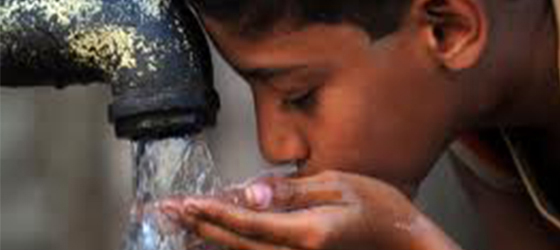Water-borne diseases

Water-borne diseases are any illness caused by drinking water contaminated by human or animal faeces, which contain infectious (pathogenic) germs (microorganisms). People are introduced to these microorganisms through contaminated drinking water, water drops, aerosols and washing or bathing.
Symptoms
Some water-borne pathogenic microorganisms that spread by water can cause severe, life-threatening diseases. Examples are typhoid fever, cholera and Hepatitis A or E. Other microorganisms induce less dangerous diseases. Often, diarrhoea (loose motion) is the main symptom. People with low resistance, mainly elderly people and young children, are vulnerable to these diseases as well.
Causes
Water-borne diseases spread by contaminating drinking water systems with faeces and urine of infected animals or people. The spread of contaminated water is likely to happen where private and public drinking systems get their water such as surface waters - creeks, rivers, lakes, and rain. These sources of water may be contaminated by infected animals or people.
Prevention
Clean water is a prerequisite for reducing the spread of water-borne diseases. Water is disinfected to kill any pathogens that might be present in the water supply and to prevent them from growing again in distribution systems. The 2 most common methods of killing microorganisms in the water supply are irradiation with ultra-violet radiation, or oxidation with chemicals like chlorine dioxide or ozone, or chlorine.
Types of Water-Borne Diseases
| Polio | Hepatitis A | Dracunculiasis |
| Malaria | Diarrhoea | Onchocerciasis |
| Cholera | Giardiasis | Lead poisoning |
| Dengue | Ascariasis | Cryptosporiodiosis |
| Scabies | Trichuriasis | Campylobacteriosis |
| Typhoid | Arsenicosis | Lymphatic filariasis |
| Anaemia | Malnutrition | Hookworm infection |
| Botulism | Legionellosis | Ring Worm or Tinea |
| Fluorosis | Leptospirosis | Methaemoglobinemia |
| Trachoma | Schistomiasis | Cyanobacterial toxins |
| Japanese encephalitis |
Copyright©2015 Amrita CREATE All Rights Reserved

 Learn
Learn
 Practice
Practice
 Offline
Offline


 Tools
Tools


